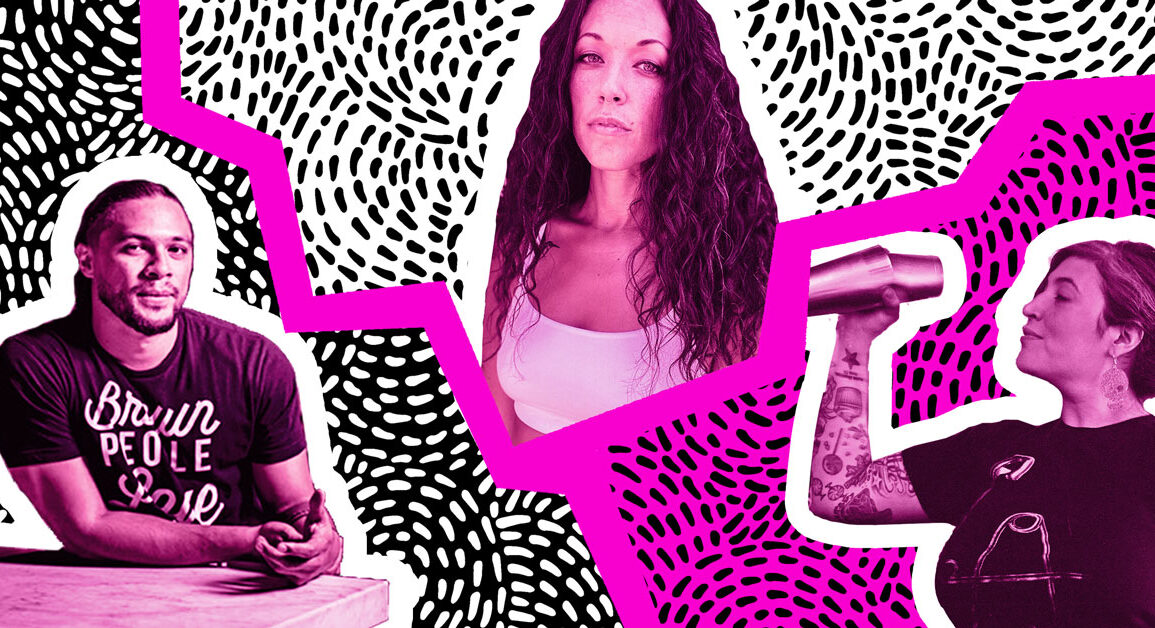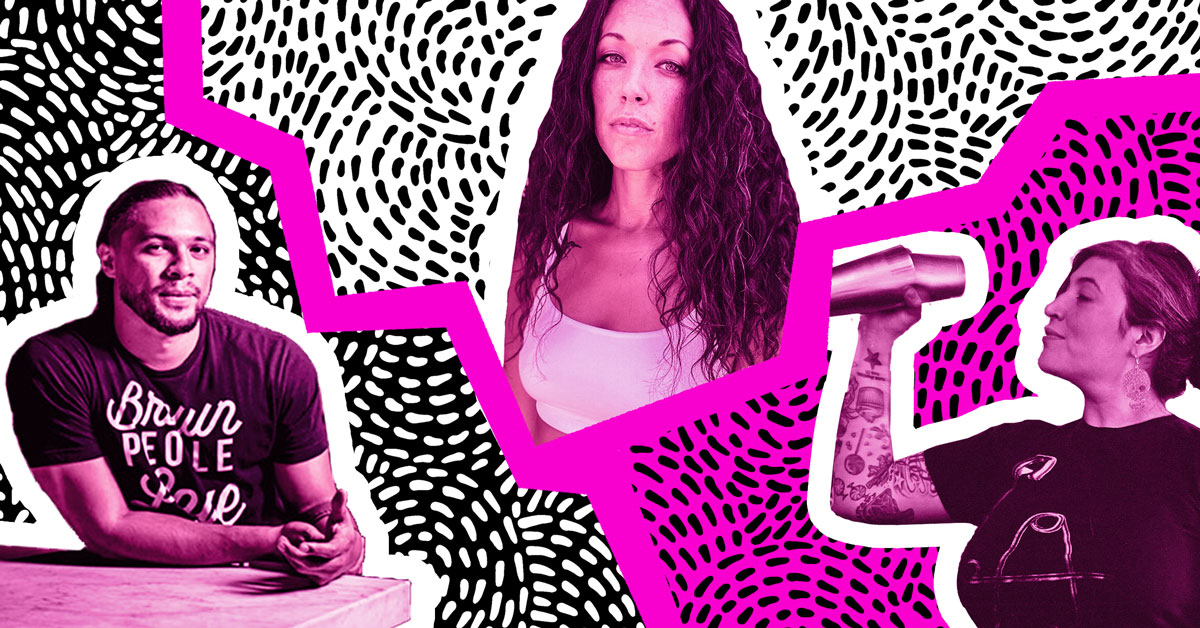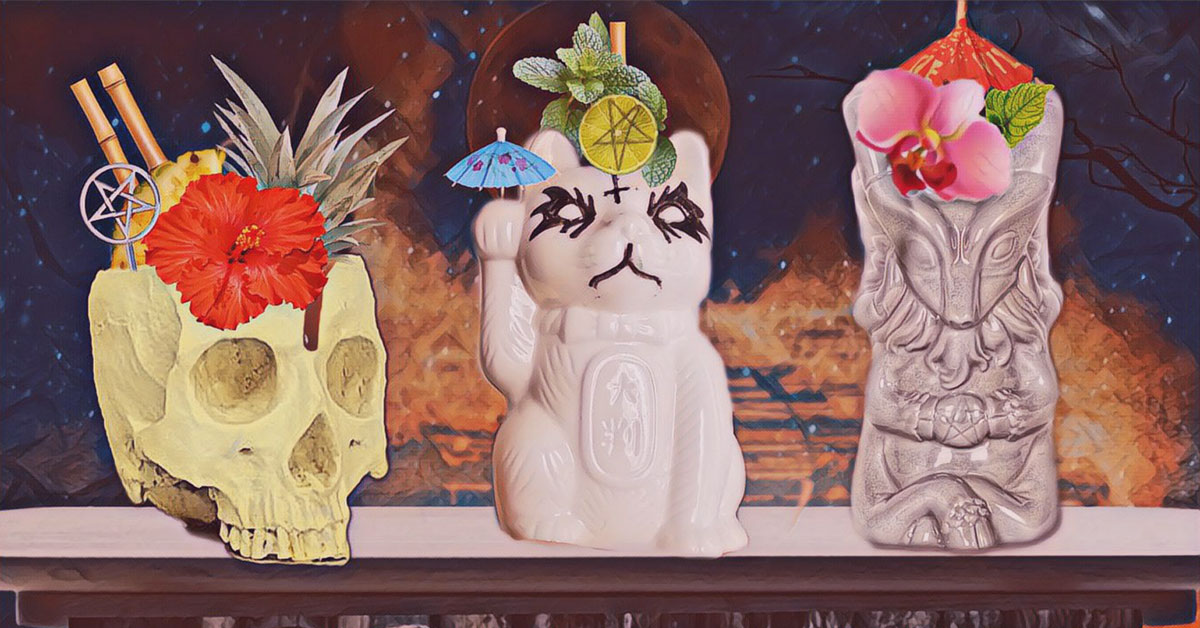What makes a bar feel tiki-like? Not too long ago, the telltale signs that you’d entered a tiki spot were totems and tropes that borrowed the look but none of the context behind Polynesian culture. In recent years, the hospitality industry has turned away from the appropriative imagery that defined the look of tiki bars since they first appeared in the 1930s—and the results are a lot more detailed, interesting and canny than anything that’s come before. The tropical, tiki-inspired bars of today are creating their own little worlds. If Tiki 1.0 was about recreating an image of a world that didn’t really exist, Tiki 2.0 dispenses with verisimilitude of the known world entirely.
More than signature details like architecture (no windows) or the cocktail menu (rum-heavy), the defining feature of modern tiki-inspired bars is a spirit of whimsy. Today’s tiki bars—even if they don’t call themselves that—are a sum of considered whims. Whether it’s the once-abandoned outpost of a 19th-century nautical club that’s maybe also a shipwreck (Sunken Harbor Club), a research lab dedicated to studying the artifacts of a robot civilization that once lived somewhere in the South Seas (Chopper), a bar in the abyss that’s frequented by demons (Paradise Lost) or the base camp of a colony of astronauts marooned on a mysterious tropical planet (Mothership), elaborate backstories do more than create a sense of place. They add patina. They differentiate. And they create opportunities to sell more than just drinks.
Let’s start with patina. The lore of a place, however invented, adds a layer of gravity to relatively new establishments. It gives a bar something to build on, literally and figuratively, which is important when drawing on tiki style, which is often defined by layers of stuff (décor, legacy, recipes) gathered over the years. These bars may be young—Sunken Harbor Club and Chopper both opened in 2019, Mothership in the summer of 2022, while Paradise Lost has been open just a few weeks—but they’re grounded by origin stories that go back hundreds, sometimes thousands of years. Some even operate in realms where time doesn’t seem to exist.
Take Paradise Lost, which co-owner Kavé Pourzanjani describes as a “tiki bar in hell.” (It’s actually in New York’s East Village.) The gist of its creation myth is this: “There’s an overarching dark lord who’s like an absentee father figure for these four archdemons,” says Pourzanjani. Those pseudo-sibling demons rule the four major areas of the void. Chaos ensues. Paradise Lost, he says, is like Callahan’s Crosstime Saloon, referring to the fictional bar created by sci-fi writer Spider Robinson. For the demons and their ilk, it’s a “neutral space where people come and hang up their hat and hang out.”
I visited Paradise Lost on a weekday afternoon. The carefully designed mood lighting wasn’t in full effect, but the vibes were strong. It’s an amalgam of styles, inspired by the “eclectic maximalism” of the four leading demons. Lilith, who rules the jungles, is into rockabilly—hence the Naugahyde stools and the midcentury neon hotel sign that signals entry into another realm. The other resident baddies bring in punk rock, surf rock and death metal influences. The ghillie suit suspended from the ceiling, a nod to the canopy of clutter seen at tiki bars from Los Angeles’ Tiki-Ti to San Francisco’s Smuggler’s Cove, is full of tchotchkes that borrow from each of those styles. Among the lights, along with typical nautical fare, you might spot, say, a Tales from the Crypt figurine. Like the bar as a whole, the net is packed with details that add up to a unique whole that feels like it has developed slowly over time.
“It’s kind of not enough just to serve really good drinks anymore,” says St. John Frizell, co-owner of Sunken Harbor Club in Downtown Brooklyn. “There was a time, around 2010, when not every restaurant had a cocktail program. There were really good cocktail bars and you sought them out,” says Frizell. “But obviously that’s not the case anymore. So it’s like you have to stretch a little bit, and you have to develop your concept a little more fully.”
A few months ago, Frizell created a game that doubles as a membership program. “It’s just Dungeons & Dragons, but in a bar,” he says. He designed a “passport” that contains an island map studded with 36 points of interest/possible challenges, which range from drinking certain cocktails to creating original works of art. Complete a dozen—only one stamp is allowed per visit—and you’re a member of the Sunken Harbor Club.
When I spoke to Frizell at the bar on a Monday night, the first induction ceremony had just taken place the day before. Jeff “Beachbum” Berry co-officiated. Both wore hooded black robes and masks covered in seashells, fashioned by Frizell himself. To determine their member numbers, inductees rolled a bronze hundred-sided die—another nod to D&D. Gamification like this exists elsewhere in the tiki world in the form of rum clubs. Smuggler’s Cove, for example, has a Rumbustion Society, the highest level of which requires hundreds of tastings. But Sunken Harbor Club’s membership philosophy is centered around encouraging play rather than accruing knowledge.
The Problem With Tiki
A conversation between Samuel Jimenez, Mariah Kunkel and Chockie Tom, three spirits professionals parsing a reckoning decades in the making—and shaping what comes next.
Tiki Can Go to Hell
Doom Tiki, a pop-up that remixes metal with tropical drinks, is challenging the genre’s prevailing aesthetic, and offering a more enlightened, subversive path forward for the category along the way.
In some ways, this new wave of tiki-inspired bars is an antidote to the seriousness of modern cocktail culture. They’re more about escapism than exclusivity, which makes sense when you consider that half of them started as pop-ups within existing bars. Sunken Harbor Club originated as a tiki night at Frizell’s Fort Defiance. The concept that became Mothership began as a pop-up at Kindred, Kory Stetina’s vegan heavy metal bar in San Diego. Permanent Vacation, as it was then called, acted as a weekly vibe shift. “It was the one day a week that you walked into Kindred and instead of us wearing black band T-shirts with doom metal thundering on the stereo, we’d be wearing floral shirts and playing kind of a mix of exotica and Krautrock,” says Stetina. “And you know, serving drinks with umbrellas in them. It was fun for everyone, including us.”
When it came to building out Mothership in its own right, Stetina commissioned Notch Gonzalez, whose past projects include Smuggler’s Cove, to design the space: a spaceship grounded on a tropical planet. Stetina was delighted to find that, like him, Gonzalez was a sci-fi nerd. Stetina describes himself as “a child of the ’80s” and cites Star Trek (“the first season”), 2001: A Space Odyssey and Nostromo, the ship from Alien, as influences on the interiors. He worked with a childhood friend, Justin Pinkerton, to create an original eight-hour score for the restaurant—a blend of percussion, rhythms and synthesizers, with a dash of the aforementioned exotica and Krautrock—which people often Shazam to no avail. (Mothership sells it on vinyl, onsite exclusively. The reception’s been good; more volumes are in the works.)
Similarly, Paradise Lost sells custom mugs centered around its demons. Nashville’s Chopper has mugs made by Beeline Creative. Sunken Harbor Club offers a hat, a kerchief and an aloha shirt. Of course, this isn’t exactly new. Original tiki bars, like the still-standing Mai Kai, also sold merch at various points in their history, though the most coveted items on eBay are things like matchbooks, menus and swizzle sticks. It just goes to show: The best things at bars can’t be bought.
This post was originally published on this site be sure to check out more of their content.







